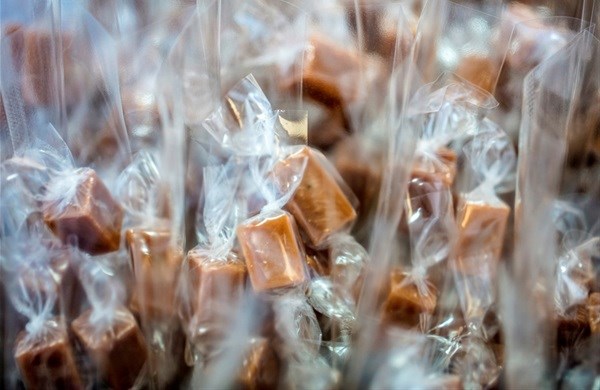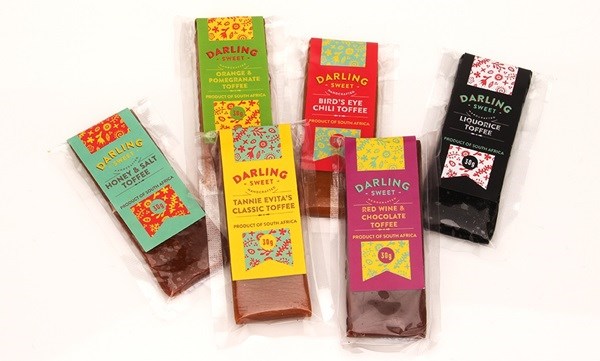
Top stories






RetailSuperga’s century of style: Celebrating 100 years of the iconic 2750 classic
Crick Group 7 Apr 2025
More news

Marketing & Media
#BehindtheSelfie: Adriana Woolridge, marketing manager at Homemation
Karabo Ledwaba 2 days














Says Darling Sweet's Hentie van der Merwe: "Our packaging and how it looks as well as the materials it is made from are very important aspects of our product and packaging development, but we are also very aware of the damage to our planet that non-recyclable plastics is causing."
Van der Merwe: Both my partner Frits (van Ryneveld) and I are very environmentally conscious so when we started Darling Sweet four years ago we made the decision that we would never use any materials for our packaging that cannot be recycled. So we started looking for suppliers of twist-grade film to wrap our toffees and after some investigating, we came across a supplier in Cape Town that imported biophane film, which is made from cornstarch and fully biodegradable.
We are aware of the carbon footprint of bringing this biophane to SA, but the alternative would be twist-grade cellophane, which is also imported and has an equally sizeable carbon footprint but is also not as easily recyclable or biodegradable.
Van der Merwe: Our products have to have a shelf life – it is not viable to have them expire after a few weeks because they have been subjected to air and moisture. Our toffees have a 12-month shelf life and we achieve this by using a laminated film consisting of two layers of the same type of plastic, BOPP, which results in a barrier sufficient for our needs and is recyclable.

Van der Merwe: Because of the cost factor. Not only is imported biophane more expensive – and so profit margins are reduced – but normal cellophane, which is a laminated film can give a product a shelf life of 24 months and therefore is more attractive to some manufacturers.
The key criteria for packaging foodstuffs is an extended shelf-life, with 24 months and longer being first prize. The two factors you need to protect your product against in order to ensure such an extended shelf life is moisture and air. There isn’t really any one type of plastic available that is an excellent barrier against both, so the industry often reverts to a laminated film whereby two different types of plastic get laminated together; one that is an excellent moisture barrier and the other that acts as an excellent barrier against air.
But such laminated films can’t be recycled, since each type of plastic requires a different recycling process, and currently there isn’t technology available that can un-laminate such films for the purpose of recycling. So such laminated films end up in landfills, which is obviously not a sustainable practice with regards to the environment.
Van der Merwe: The biodegradable biophane is considerably more expensive than ordinary twist-grade cellophane. Thankfully our customers are increasingly keen on consuming foodstuffs that are packaged in environmentally-friendly wrapping and are prepared to pay a premium, knowing that the packaging they throw away afterwards is biodegradable or can be recycled. We state our use of biodegradable wrappers on our packaging and use it as a selling point.
Van der Merwe: The one problem with biodegradable film is that there are currently no biodegradable inks available, which poses a problem for us since ideally we would like to print the different toffee flavours on the wrappers, but that isn’t possible right now.